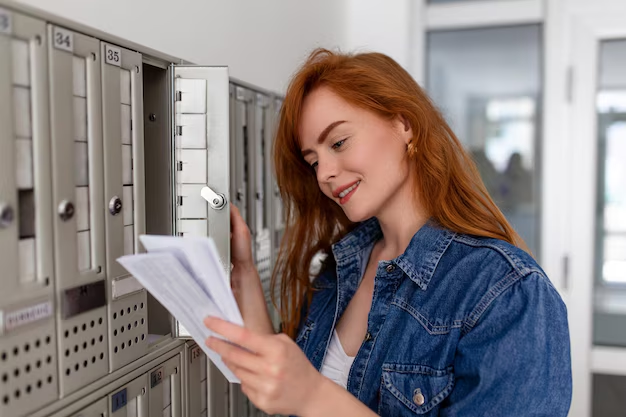How the IRS Reaches Out: What You Need to Know
Receiving a communication from the Internal Revenue Service (IRS) can be a daunting experience. Many people initially fear the worst, suspecting audits or hefty penalties. However, understanding how the IRS contacts you can alleviate anxiety and help you handle the situation more effectively. In this guide, we’ll delve into the various methods the IRS uses to reach taxpayers, and how you can prepare yourself if you receive a communication. We will also touch on several key points surrounding IRS interactions to ensure you have a thorough understanding of the processes at play.
Understanding How the IRS Makes Contact
Traditional Mail: The Primary Method
The most common way the IRS contacts individuals is via traditional mail. When the IRS needs to communicate anything regarding your taxes, they typically send an official letter or notice to the address you provided on your tax return. This could concern a variety of issues such as your tax return, a balance due, or an adjustment on your return.
- Important Tips:
- Always open letters from the IRS: Ignoring these can lead to additional penalties or misunderstandings.
- Verify the legitimacy: IRS letters will have an official seal and provide contact information for verification purposes.
Phone Calls and IRS Communication
While less common, the IRS may also contact you by phone. However, they usually do this only after prior communication by mail. It is crucial to differentiate between genuine IRS calls and scams impersonating the IRS.
- Key Identifiers of Legitimate IRS Calls:
- Follow-Up: Genuine calls are typically follow-ups to a letter or notice you have already received.
- No Immediate Threats: The IRS will not threaten to arrest or deport you over the phone.
- Verification: You can always request the case details by mail to verify legitimacy.
In-Person Visits
In selective scenarios, IRS agents may visit your home or business. This is generally a last resort and occurs when there are significant issues to address, such as ongoing audits, collections, or investigations. Agents should always present two forms of official identification.
- What to Do:
- Request Identification: Agents should have both a pocket commission and an HSPD-12 card.
- Reach Out: If unsure, contact the IRS to confirm the appointment.
Digital Communication: What to Expect
Though the IRS now offers some digital services, they do not initiate contact via email, text messages, or social media. Any such communications are likely scams. Be extremely cautious of any entity claiming to be the IRS through these channels.
- Safety Measures:
- Ignore Digital Communications: Delete and report suspicious messages to [email protected].
- Secure Information: Never disclose personal information through unsecured digital channels.
Related Subtopics: Adding Depth and Context
Recognizing IRS Scams
Scams have become increasingly sophisticated, targeting taxpayers with dubious threats and false claims. Knowing the hallmarks of an IRS scam can shield you from stress and potential identity theft.
- Common Scam Tactics:
- Demanding Immediate Payments: Scammers often demand swift payment and claim it must be with non-traditional methods like gift cards.
- Threatening Legal Action: They might threaten arrest or deportation if you don’t comply.
- Spoofing IRS Numbers: Sometimes they manipulate caller ID to display a legitimate IRS number.
Safeguarding Yourself Against Scams
Steps to Protect Yourself:
- Stay Skeptical: Always question emails, calls, or messages asking for personal information.
- Use Verified Channels: Only use established contact avenues to reach the IRS directly.
- Educate and Share: Talk about scam strategies with family and friends to increase awareness.
The Importance of Keeping Contact Information Up to Date
Having your contact information accurate is essential for timely communication. Update your address when you move, and ensure your records reflect changes in your personal details to avoid missed communications.
- Ways to Update:
- Direct Mail: Send Form 8822, Change of Address, to the IRS.
- During Tax Filing: Reflect updated information on your annual tax return.
- Online Services: Use IRS’s online account services to manage profile information.
Practical Consumer Tips and Key Takeaways
📝 Summary of How the IRS Contacts You
| Type of Contact | Details |
|---|---|
| Primary mode; includes notices and official letters. Always open these promptly. | |
| Phone Calls | Usually follows written correspondence; beware of scams. |
| In-Person Visits | Rare and typically follow major issues; verify agent credentials. |
| Digital Communication | Avoid emails and texts claiming to be from the IRS; likely scams. Report suspicious messages. |
Next Steps If Contacted:
- Stay Calm: Receiving a letter or call doesn't necessarily indicate a problem.
- Verify Authenticity: Always check the legitimacy of the contact.
- Respond Promptly: Follow the instructions given in any genuine IRS communication.
- Seek Help: If doubt persists, consult a tax professional for guidance.
Final Insight: Staying Informed and Prepared
Understanding how and why the IRS contacts you significantly reduces anxiety and empowers you to handle matters efficiently. By remaining vigilant and informed regarding scams, keeping your contact information up to date, and acting promptly upon receiving communication, you can easily navigate any IRS interactions.
Remember, staying informed and prepared isn’t just about addressing IRS concerns effectively; it’s about safeguarding your financial health and maintaining peace of mind. With this knowledge, you are better equipped to manage any IRS contact with confidence and clarity.

Related Topics
- Are Irs Economic Impact Payments Still Available
- Can i Pay The Irs Online
- Can Irs Form 3911 Be Filed Electronically
- Can You Check Irs Offset Online
- Do Banks Report Deposits To The Irs
- Do Casinos Send W2g To Irs
- Does Cash App Report To Irs
- Does The Irs Do Payment Plans
- How Can i Change My Address With The Irs
- How Can i Contact The Irs